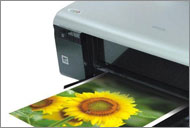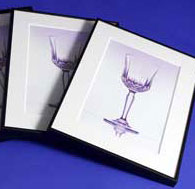In the world of printing, whether for professional or personal projects, understanding ink drying times is crucial to achieving flawless results. Different types of ink, from dye-based to pigment-based, and even specialty inks, have varying drying times that can significantly impact the final quality of your print.
We’ll delve into the nuances of ink drying times by ink type, providing valuable insights for anyone from the casual home printer user to the professional graphic designer. Knowing how long you should let your prints dry not only helps in planning your printing projects more efficiently but also ensures that your prints remain smudge-free and of the highest quality
Best Practices for Letting Ink Try
How Long?

As a general rule, you can handle and work with photo inkjet prints as soon as the come out of your printer. They are "dry to the touch" but in reality it takes about 24 hours for an inkjet print to fully cure and dry. There are some points you should know about and consider when you are printing.
Wait Before Deciding On Color Quality
The colors of a photo print change over the first hour or so of drying. Always allow at least an hour before deciding if you are satisfied with a print.
Framing? Wait at Least 24 hours
If you are going to frame an inkjet print under glass or plastic allow at least 24 hours of drying time. If the print is not fully cured a light haze can appear on your glass. This is called outgassing. The haze is the ink solvent continuing to escape from a print as it dries.
Read a Great Article on Framing and Mounting Techniques.
Speeding Up the Process

Put a sheet of plain copy paper on top of your print when it is complete. You will notice the copy paper begin to curl as it absorbs the escaping ink solvent.
For best results don't stack prints.
It will take up more space, but your prints will dry faster if allowed to sit out unstacked. Put a sheet of copy paper on each print to prevent dust and debris from settling on your work.
Ink Drying Wait Time - A General Overview
If you constantly ask yourself, "How long does it take for ink to dry after printing?" you're not alone. The answer depends a variety of factors and we've listed a general guide below.
The drying time for ink after printing varies based on several factors:
Ink Drying Times by Ink Type
Dye-based Inks
These are typically quicker to dry and are often touch-dry as soon as they come out of the printer. However, they can smudge if exposed to water or moisture shortly after printing.
Pigment-based Inks
These dry quickly as well. However, it is recommended that you allow a minute or so before handling.
You can learn more about their differences in our guide on Dye vs Pigment Based Inks
How the Type of Paper Affects Ink Drying Time
Uncoated Printer Paper
Uncoated papers will dry pretty fast. Because they have no coating to fix the ink in place, give them 30 or so seconds before handling, folding, placing into an envelope, etc.
Photo or Glossy Paper
These are designed to produce a sharper, more vibrant image. They have a coating that grabs the ink, holds it in place, and actually speeds the drying process. Prints are usually dry to the touch immediately. Still, for best results you should give them a minute or so to “settle” before handling.
Specialty Papers
Some thick or coated papers may have varying drying times.
Printer Settings
Printers often have settings that can adjust the amount of ink used. A high-quality setting will deposit more ink, leading to a longer drying time.
Environmental Factors
Humidity: Higher humidity can increase drying time significantly. The moisture in the air prevents the water in the ink from evaporating quickly.
Temperature: Cooler temperatures can also slow down the drying process.
Amount of Ink: Large areas of dark or saturated colors will take longer to dry compared to sparse or light-colored prints.
Tips for Ink Drying Time
For standard documents printed on regular paper, it's usually safe to handle them immediately after printing.
For photos or high-quality prints on specialty papers, it's a good idea to leave them untouched and spread out for several hours to ensure thorough drying.
Always handle fresh prints by the edges to avoid smudging.
If you're stacking or storing prints, consider placing a sheet of plain paper between them, especially if they haven't had ample time to dry.
Remember that drying times can vary significantly depending on the specific combination of factors involved, so it's always a good idea to err on the side of caution.
Related Article: How to Keep Printer Ink from Drying Out
Last updated: January 26, 2024




